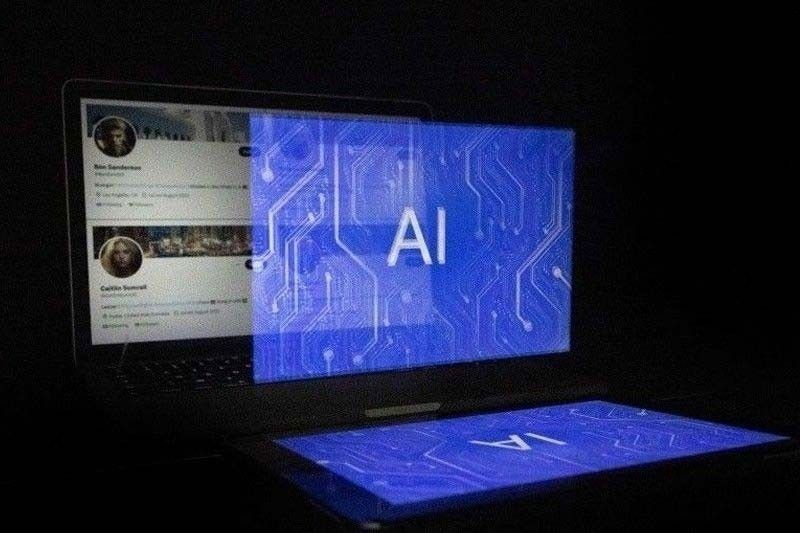Technology trends


What does technology have in store for us in 2024?
According to Forbes, next year will be the year that the world gets to grips with how truly powerful and useful generative artificial intelligence (AI) or everyday automation can be.
For non-techies, just the phrase AI, Forbes noted, can cause a shiver of fear: if you’re not worried about it taking over the world or destroying the human race, you might be nervously waiting for it to steal your job and make you redundant.
The same online publication however pointed out that as generative AI finds it way into more of the applications we use every day, from search engines to office software, design packages and communication tools, people will come to understand its potential.
Used properly, it’s like having a super-smart personal assistant on hand 24/7, making us more efficient, faster and more productive, it added.
It likewise explained that most importantly, by handing over our everyday menial brainwork such as obtaining information, scheduling, managing compliance, organizing ideas, or structuring projects to AIs, we will find ourselves with more time to leverage our truly human skills.
“We will spend more time being creative, exploring new ideas and original thinking, or communicating with humans rather than programming machines. The genie is out of the bottle, and while there are undeniable challenges around ethics and regulation that still have to be solved, I believe 2024 will be the year when everyone starts to understand just how transformative generative AI will be to our lives,” Forbes noted.
The second game-changing trend for 2024 is what is known as phygital convergence. According to the report, the real and the digital are becoming increasingly intertwined and technologies like augmented reality (AR), virtual reality (VR), and the immersive internet are breaking down barriers between the physical world and the digital domains where we are spending more and more of our time.
“This is true for work, where we collaborate remotely through platforms like Zoom, Teams and Slack, and play, where online gaming and e-sports are more popular than ever. We use social apps like TikTok and Instagram to create virtual spaces where we share moments from our real lives – curated and filtered to create digital personalities that become our virtual selves,” the report added.
Forbes explained that across industries, we see this concept emerging in the form of the digital twin – a virtual representation of a real-world object, system or process. This could be as simple as an individual component or as complex as an entire city or even an ecosystem. “Importantly, the digital twin is built from data captured from its real-world counterpart. Advances in the science of genomics mean we can break down the fundamental essence of life into digital code, which can then be manipulated and rebuilt in the real world in order to engineer new drugs and eradicate diseases,” it said.
It expects that next year, we will continue to see less and less distinction between the real world and the virtual world, which means that digital is becoming increasingly realistic, and the real is becoming as flexible and malleable as the digital.
The next trend is sustainable technology which Forbes expects will continue to take center stage next year as countries and corporations continue to work on meeting net-zero commitments while individuals at the same time will increasingly leverage technology in order to minimize their personal impact on the environment.
Sustainable technology includes more environmentally friendly ways of doing things we already do such as electric cars as well as novel solutions to environmental problems such as carbon capture and storage, it explained.
However, challenges remain for developers and users of sustainable technology. These will include a need to develop ethical and sustainable methods for sourcing and extracting materials needed for manufacturing devices, infrastructure demands created by changing consumer habits such as the adoption of electric vehicles, and potential disparities between different geographic or socio-economic groups in their ability to access green alternatives, Forbes noted.
It added that we will also become increasingly alert to the presence of greenwashing, or superficial efforts intended purely to generate positive PR around a particular technology.
Fourth on Forbes’ list is cyber resilience. One in two businesses has been victim of a successful cyber attack in the past three years and the cost of these attacks to industry is expected to grow to over $10 trillion by the end of 2024. It said that cyber threats are becoming more sophisticated and competition to bring new solutions leveraging breakthrough technologies like AI to market is intensifying to ensure that cyber resilience will become an increasingly prominent trend throughout next year across business and consumer technology.
And last on the list is quantum computing which is expected to transition to tangible benefits next year.
Quantum computers, it explained, are capable of carrying out vast numbers of calculations simultaneously by harnessing elements of quantum physics. Forbes expects to see benefits in 2024 as it is applied across various compute-heavy fields, including drug discovery, genome sequencing, cryptography, meteorology, material science, optimization of complex systems such as traffic flow through large cities and even search for extraterrestrial life.
It is extremely important for businesses to be flexible enough to be able to adjust their business models and operations appropriately to take advantage of these breakthrough technologies.
As pointed out by Gartner VP analyst Bart Willemsen, technology disruptions and socioeconomic uncertainties require a willingness to act boldly and strategically enhance resilience rather than rely on ad hoc responses. IT leaders must ensure calculated risks, and make reliable and durable investments to sustainably enable both internal and external value creation.
For comments, email at [email protected]
- Latest
- Trending




























